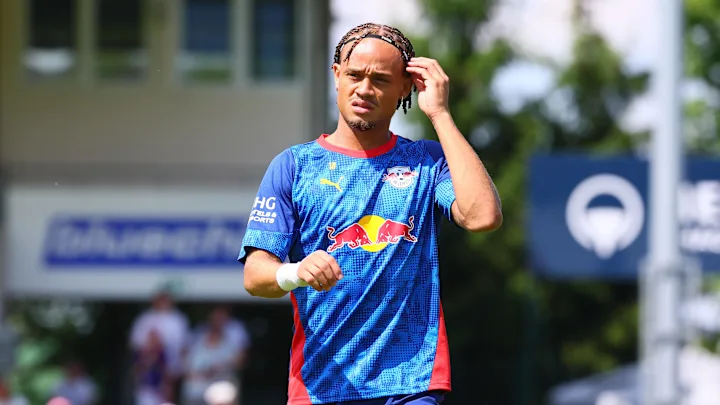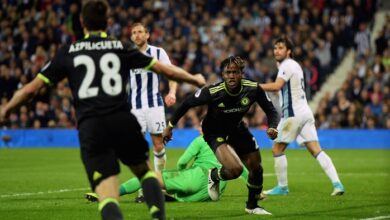
Chelsea are actively reinforcing their squad ahead of the 2025/26 campaign. Having already secured Joao Pedro from Brighton, Liam Delap from Ipswich, and Jamie Bynoe-Gittens from Borussia Dortmund, the club is eyeing further additions.
One of the names under serious consideration is Xavi Simons, the Dutch talent currently at RB Leipzig and a product of Barcelona’s La Masia academy.
According to reports from Fabrizio Romano, negotiations on personal terms are progressing steadily. The player is reportedly open to the move, and Chelsea are keen to act swiftly before formal discussions with Leipzig commence.
🚨🔵 Understand Chelsea are advancing in talks with Xavi Simons on personal terms!
Xavi, keen on the move and open to joining Chelsea… direct talks in progress to agree contract details and terms.
Chelsea want to be fast ahead of club to club talks with Leipzig. pic.twitter.com/4XhH6gzeOL
— Fabrizio Romano (@FabrizioRomano) July 23, 2025
But the question remains: what is the Xavi Simons style of play, and how would he integrate into Chelsea’s evolving tactical setup?
Xavi Simons Style of Play
To understand the Xavi Simons style of play, it is essential to look at his development and recent usage. Simons, now 22, came through the famed La Masia academy before moving on to PSG and later RB Leipzig. Under Marco Rose in Germany, he has been deployed in both 4-4-2 and 3-4-3 formations. He has largely operated in the left attacking midfield position, drifting freely across the pitch to influence build-up and attacking phases.
Simons is not confined to the touchline, despite occasionally starting wide. He prefers operating in central pockets, receiving the ball at feet, progressing play through quick combinations, and either making a final pass or taking shots from distance. In settled possession, he often:
-
Receives wide before moving centrally.
-
Drops deep to combine and create space.
-
Finds gaps between midfield and defensive lines.
He behaves like a classic No. 10 with his movements, but his defensive responsibilities often mirror those of a winger tracking full-backs and pressing from the front.
Xavi Simons Style of Play: The Strengths
The Xavi Simons style of play is built on agility, balance, and intelligence. His ability to shift direction quickly makes him extremely unpredictable in one-on-one scenarios. Whether it’s a sharp Cruyff turn or a disguised pass, he keeps defenders guessing and often creates openings through sheer unpredictability.
Acceleration is another standout quality. Simons can burst through tight spaces even when carrying the ball at speed. His timing and body positioning allow him to disguise both dribbles and passes, unlocking defenses with ease.
In terms of movement and reception, he reflects his La Masia background. Constant scanning enables him to find passing options and measure space. His quick decision-making supports rapid combinations, often dragging defenders out of shape. Simons excels in:
-
Wall passes and give-and-go situations.
-
Drawing defenders to create space for teammates.
-
Executing clever flicks and lay-offs under pressure.
Passing is also a major strength. His vision extends to both short, intricate play and long, defense-splitting passes. His weight of pass is usually precise, allowing teammates to continue their run without breaking stride. Simons frequently uses outside-foot techniques (trivelas) to bypass defenders.
Despite his preference for his right foot, he delivers creative, high-value passes and has produced impressive assist numbers. His passing style is both effective and aesthetically pleasing.
When dribbling centrally, he demonstrates flair and composure. He handles tight spaces with skill, aided by excellent reflexes and a wide array of feints. His dribbling is most effective in the middle of the pitch, where quick shifts and disguised touches can dismantle organized blocks.
Xavi Simons Style of Play: The Weaknesses
Despite the technical quality, the Xavi Simons style of play comes with limitations that affect both positional flexibility and consistency.
His right-foot dominance, while not crippling, introduces predictability. In wider positions, he frequently cuts inside, avoiding the use of his left. This can restrict options when isolated against defenders, particularly in high-speed transitions.
Although his passing range is strong, some outside-foot passes appear to compensate for his reluctance to use his left. This occasionally leads to under-hit balls or reduced precision, especially when threading passes from the left flank into central channels.
Simons’ dribbling, too, suffers in wide areas. He tends to avoid driving down the line on his left, which limits unpredictability and weakens his impact as a traditional winger. In central areas, where his skillset is best utilized, the issue becomes less apparent.

Physicality is another concern. At 5ft 7in, Simons can struggle in duels against more robust players. He is often dispossessed in contested scenarios, and while he draws fouls, he also concedes possession in dangerous zones. This presents challenges if he is deployed in a central midfield trio, where resistance to pressure is critical.
His top speed is also a limitation. Although explosive in short bursts, he does not maintain that pace over longer distances. This can make it difficult for him to beat defenders in wide spaces, particularly against teams with fast full-backs.
When it comes to end product in wide roles, his output has been mixed. He has scored from distance but rarely from the left channel. His shots tend to lack curl, which restricts his effectiveness when aiming for the far post from wide positions. His crossing is similarly inconsistent, often let down by either execution or decision-making sometimes opting for driven deliveries where lofted ones are needed.
These elements suggest that while Simons has standout qualities, his utility on the flanks may not be as impactful as it is in central areas.
How Does He Fit in at Chelsea?
Maresca experimented with a number of tactical ideas during Chelsea’s successful Club World Cup campaign, where the Blues defeated PSG in the final and claimed a significant share of the tournament’s prize money. One of the most notable tactical setups involved a 3-2-5 structure in possession. This saw either full-backs or wingers maintain width, while two attacking midfielders, or natural No.10s, occupied the half-spaces behind the striker.
Christopher Nkunku, Enzo Fernández, and Cole Palmer alternated in those advanced midfield roles with considerable success. With Nkunku’s future at the club uncertain, there is now a vacancy in that creative midfield position, one that Xavi Simons appears perfectly suited for.
The Xavi Simons style of play aligns well with the demands of this system. His comfort operating in tight spaces and between the lines makes him a natural fit for a hybrid No.8/No.10 role. Simons thrives on receiving the ball to feet, combining quickly, and breaking defensive shapes through sharp movement and incisive passing.
His agility and low centre of gravity allow him to operate effectively under pressure, especially in crowded central areas. In a setup where Chelsea look to overload the final third, Simons’ ability to maintain tempo and link play is a clear asset. His sharp passing, disguised through body shape, can help unlock compact defenses, particularly when paired with mobile forwards.
Simons’ shooting from the edge of the box adds another layer of threat. Chelsea’s structure under Maresca is designed to funnel possession into those half-spaces, and Simons is capable of punishing defenders who drop too deep with precise strikes from central positions. He has also shown the ability to exploit pockets of space left by defenders focused on wider threats.
This could prove especially valuable on the left side, combining with players like Joao Pedro and Jamie Bynoe-Gittens. With Pedro’s intelligent movement and Gittens’ direct wide runs, Simons would have the supporting profiles to link with and create overloads. His quick one-twos, creative flicks, and positional awareness could thrive in these partnerships, allowing Chelsea to shift between vertical attacks and slower, positional buildup depending on the opposition.





